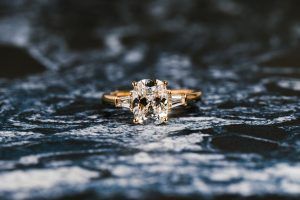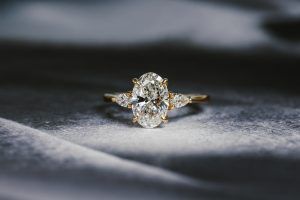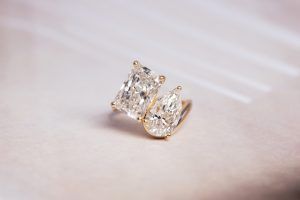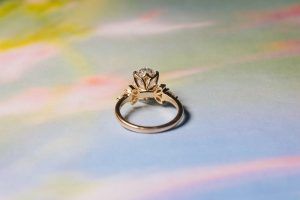
written by Mo
Why Diamond Color Is So Subjective
Hey there!
Looks like you’re here for the tea on diamonds and color, so I’ll spill.
Today we’re going to talk about why color is the most subjective factor of the 4 C’s (Carat, Clarity, Colour and Cut), if you haven’t read about the rest you can do that now, or when you’re done here.
My main goal today, is to show you how to figure out your color fit.
I have a hunch that right now you’re wondering why color would be the most subjective diamond quality.
The answer is really simple.
It’s because none of us see color exactly the same.

Do you remember that dress that broke the Internet? It was the difference between seeing the dress is black and blue or white and gold.
The two perspectives seem like polar opposites, right? It just goes to show that our eyes are so unique in their perceptions and perspectives.
our alphabet starts with 'D'
The way colors are denoted for diamonds is with an alphabetical scale ranging from D-Z. The differences in color grading happen because most diamonds that come out of the ground usually have a bit of a yellowish tinge to them.

The general rule of thumb is, the more yellow there is in your diamond, the less valuable it’s going to be. So, on the spectrum, D is where there is no yellow whatsoever, it tends to be the highest in price because it is the rarest, and then generally as the yellow in your diamond increases, the price of the diamond decreases.
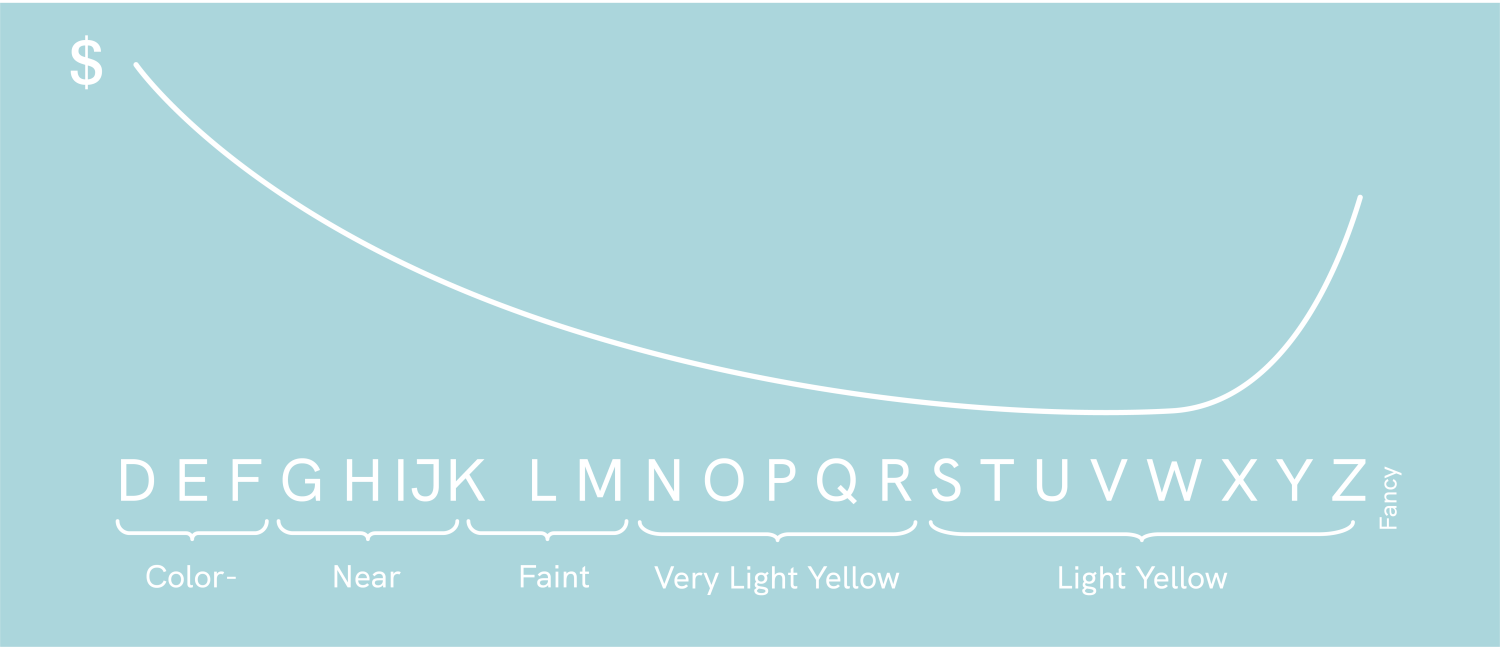
Oddly enough the price actually starts spiking up around the other extreme end of the spectrum from X-Z, because not only is it extremely rare, but that’s also where you get so much yellow, the diamond does look quite beautiful. People really like the uniqueness, hence a higher demand for that color range too resulting in a higher price point.

Testing Your "I" Sight

Take a look at the diamonds above. When you look at diamonds like this, people who are extremely color sensitive might notice a difference, but most people probably won’t. This is because at this angle the light reflection basically distorts our perception of color. The proper way to assess a diamond’s color is by looking at what we call the body color. In order to see that, you actually have to look at the diamonds from a completely different angle.

To see the body color, a diamond needs to be flipped upside down and tilted at a bit of an angle. When you do that, you’ll be able to see some hints of yellow, possibly even some brown as you look at the diamonds from left to right. If you’re looking for a colorless diamond, a good starting point is with a diamond of color I or higher.
Similar to clarity, the higher you go up in color, the rarer the diamond and the bigger the premium you’re going to pay.
how do I figure out what color is best for me?
The answer is really simple, but extremely important.
You need to look at stones that are the same shape but differ in color and look at them side by side. This is how you’ll be able to best assess your color sensitivity. For most people, if we do see color, we are going to see it best as a comparison not in isolation.
It’s also important to do a blind comparison — you should not know what color each of the stones are to see if you can perceive the difference without a bias. Eight out of ten people, looking at diamonds from a D to an I do not notice a difference. If you do, you’ll need to figure out what range you start to see that difference at. Anything before that you might not be able to tell the difference anymore so there would be no need to go higher in color.
So, to help your decision-making process
#1
Look at different stones side by side and see what point you stop seeing color.
#2
Go in blind.
#3
Compare that to the premium of going higher in color to decide if it’s worth it.
In summary, don’t focus on the letter, focus on what your eyes can see. And if a G and an I look exactly the same to you, then go with an I. You’ll save money.




